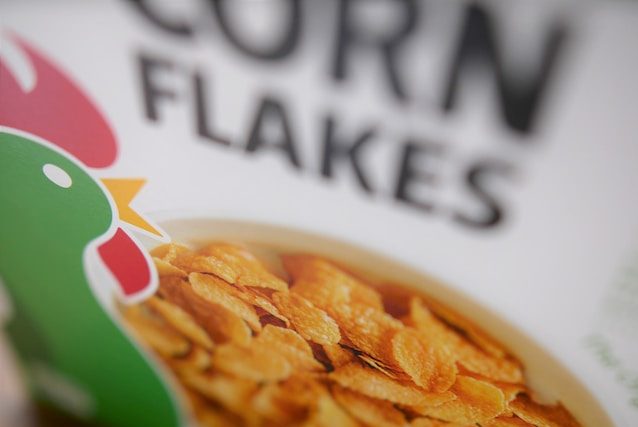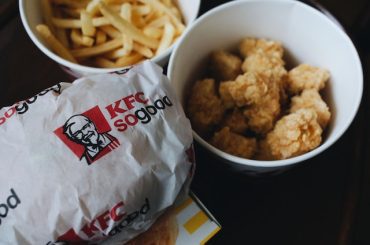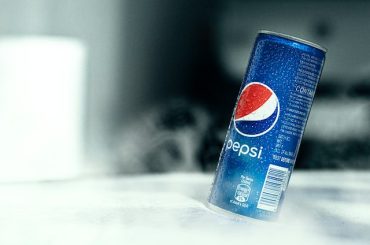Before we dive deep into the Marketing Mix (4Ps), let’s get the business overview of Kellogg’s. Kellogg Company is a leading global manufacturer and marketer of ready-to-eat cereal, snack food products, and convenience foods.
The company was founded by W.K. Kellogg in 1906 in Battle Creek, Michigan, USA. Since its inception, Kellogg’s has expanded its operations and has a presence in over 180 countries worldwide.
The company operates through various segments to cater to different consumer needs. These segments include:
- North America: This segment comprises the United States and Canada and is the largest Kellogg product market. It includes categories such as cereals, snacks, frozen foods, and other convenience foods. Some popular brands in this region are Kellogg’s, Kashi, Eggo, and Morningstar Farms.
- Europe: The European market is another significant segment for Kellogg’s, offering various products, including cereals, snacks, and wholesome foods. Some of the well-known brands in this region are Kellogg’s, Pringles, and Special K.
- Latin America: This segment encompasses countries in Central and South America and the Caribbean. Kellogg’s offers a variety of products in this region, including cereals, snacks, and convenience foods. Key brands in this market include Kellogg’s, Pringles, and Zucaritas.
- Asia, Middle East, and Africa (AMEA): This segment comprises the company’s operations in Asia, the Middle East, and Africa. Kellogg’s offers a diverse range of products in this region, including cereals, snacks, and convenience foods. Popular brands in this market include Kellogg’s, Pringles, and Corn Flakes.
Financial Performance: In 2022, Kellogg’s generated revenue of $15.3 billion with a net income of $962 Million.
How Snap, Crackle, and Pop Helped Kellogg’s Grow
Here is the Marketing Mix (4Ps) for Kellogg’s
A marketing mix, also known as the 4Ps of marketing, is framework marketers use to develop and implement effective marketing strategies. The concept helps businesses identify and optimize the key components necessary to promote and sell their products or services. The 4Ps of the marketing mix are Product, Price, Place, and Promotion.
In addition to the traditional 4 Ps, marketers have expanded their strategies by incorporating additional elements (People, Process & Performance) to help them better understand and reach their target audiences. But we will focus on the 4Ps as they are the foundation of any marketing strategy. In this article, we will understand the marketing mix (4Ps) of Kellogg’s.
What is a Marketing Mix? What are the 4Ps of Marketing?
Product
- Product variety: Kellogg’s has a diverse portfolio of products, including popular cereal brands such as Corn Flakes, Special K, Rice Krispies, and Frosted Flakes, as well as other breakfast and snack items like Nutri-Grain bars and Eggo waffles. This variety allows the company to cater to different consumer tastes and preferences.
- Product quality: Kellogg’s is committed to maintaining high-quality standards for its products, sourcing high-quality ingredients, and following strict manufacturing processes to ensure consistency and safety. The company’s dedication to quality is key to its brand image.
- Product innovation: To stay competitive and meet the evolving needs of consumers, Kellogg’s continuously invests in research and development, leading to the introduction of new products, line extensions, and improvements to existing products. Examples include adding healthier options, such as gluten-free and organic cereals, and limited-edition flavors of existing products to create excitement and drive sales.
- Packaging: Kellogg’s pays attention to its packaging, which serves both functional and promotional purposes. Packaging is designed to be visually appealing and easily recognizable on store shelves while protecting the product and providing consumers with relevant information such as nutritional content and product details.
- Branding: Kellogg’s has established itself as a trusted and recognizable brand. This brand equity is built through product offerings, marketing efforts, and consumer experiences. A strong brand helps differentiate Kellogg’s products from competitors and drives customer loyalty.
Price
- Competitive pricing: Kellogg’s uses competitive pricing to position its products alongside or slightly above its main competitors in the market, such as General Mills and Post Consumer Brands. This strategy aims to balance offering value to consumers and generating a healthy profit margin.
- Price differentiation: Within its extensive product portfolio, Kellogg’s offers a range of price points to cater to different consumer segments. For example, premium products like Special K and organic cereals are priced higher than more value-oriented options like Corn Flakes or Rice Krispies. This approach allows the company to target a wider customer base and accommodate various budgets and preferences.
- Promotional pricing: Kellogg’s utilizes promotional pricing techniques, such as discounts, coupons, and special offers, to attract price-sensitive consumers and boost sales. These promotions can be time-limited or linked to specific events or product launches, and they encourage trial, purchase, and repeat business.
- Cost-based pricing: Kellogg’s considers the costs associated with its products’ production, packaging, and distribution when determining prices. By carefully managing its cost structure, the company can maintain profitability while offering competitive prices in the market.
- Price skimming: For new and innovative products, Kellogg’s may employ a price skimming strategy, which involves initially setting a higher price to capitalize on early adopters and gradually reducing the price to attract a broader consumer base. This strategy helps the company recoup its research and development investments and capitalize on the novelty factor of the product.
Place
- Distribution channels: Kellogg’s uses a combination of direct and indirect distribution channels to make its products available to consumers. This includes partnering with wholesalers, distributors, and retailers to ensure its products reach various points of sale, such as supermarkets, grocery stores, convenience stores, and online retailers. By leveraging a wide range of channels, Kellogg’s ensures maximum visibility and accessibility for its products.
- Global presence: Kellogg’s has a strong international presence, with its products available in over 180 countries. The company has manufacturing facilities in multiple regions, which helps streamline distribution, reduce shipping costs, and more effectively cater to local tastes and preferences.
- Supply chain management: Efficient supply chain management is essential to maintain product availability and minimize inventory costs. Kellogg’s invests in advanced supply chain management systems, including forecasting, demand planning, and inventory management, to ensure its products are readily available to consumers while minimizing waste and stockouts.
- Strategic partnerships: Kellogg’s collaborates with various partners, such as retailers and other food industry players, to create mutually beneficial relationships. These partnerships can result in better product placement, exclusive promotions, and improved in-store visibility, ultimately driving sales.
- E-commerce: With the growing popularity of online shopping, Kellogg’s has expanded its presence in the e-commerce space, partnering with major online retailers and launching its direct-to-consumer platform in select markets. This enables the company to reach a wider audience and cater to consumers’ changing shopping habits.
Promotion
- Advertising: Kellogg’s uses various advertising channels to reach its target audience, including television, radio, print, digital, and outdoor advertising. The company creates memorable ad campaigns that highlight its products’ benefits, taste, and unique features, reinforcing brand messaging and generating awareness.
- Social media marketing: Kellogg’s maintains a strong presence on social media platforms like Facebook, Instagram, Twitter, and YouTube. The company uses these platforms to engage with consumers, share product news, showcase recipes, and run promotional campaigns. Social media also allows Kellogg’s to gather consumer feedback and insights to inform future marketing and product development efforts.
- Sponsorships and partnerships: Kellogg’s engages in sponsorships and partnerships with relevant organizations, events, or individuals to enhance its brand image and increase visibility. Examples include partnerships with athletes, sports teams, or events such as the Olympic Games, which help to associate the brand with a healthy and active lifestyle.
- Public relations (PR): Kellogg’s leverages PR to generate positive media coverage and manage its reputation. The company may engage in press releases, media events, and corporate social responsibility initiatives to build and maintain a positive brand image.
- Sales promotions: Kellogg’s uses various sales promotion techniques to encourage consumer trials and purchases, such as offering discounts, coupons, product samples, or buy-one-get-one-free deals. These promotions can be short-term and designed to create a sense of urgency, driving immediate sales and fostering brand loyalty.
- In-store marketing: Kellogg’s works closely with retailers to optimize in-store marketing efforts, such as product placement, shelf displays, and point-of-purchase materials. Effective in-store marketing helps capture shoppers’ attention, providing additional information and reinforcing the brand’s messaging.
- Loyalty programs: Kellogg’s may implement loyalty programs or reward schemes to encourage repeat purchases and build long-term relationships with consumers. These programs can take various forms, such as collecting points for each purchase or offering exclusive discounts and offers to loyal customers.











